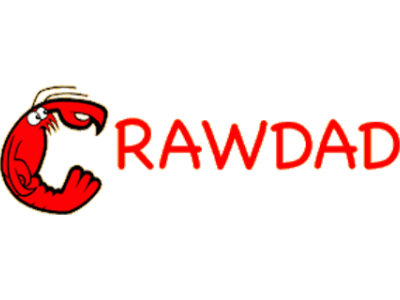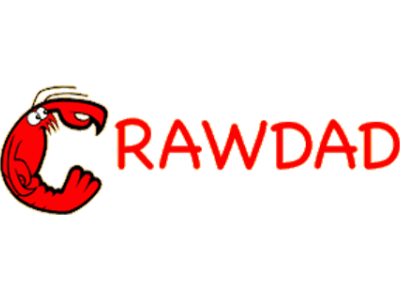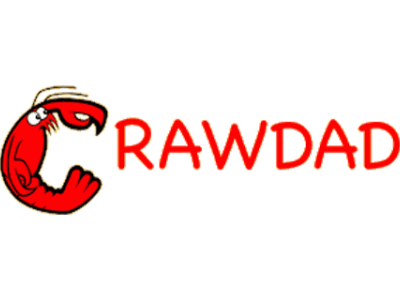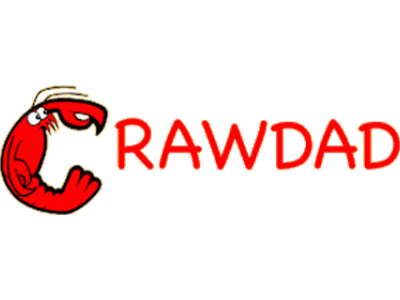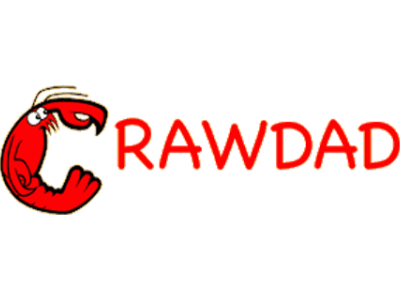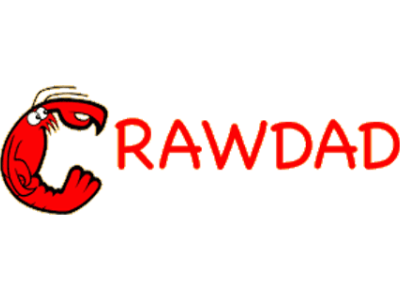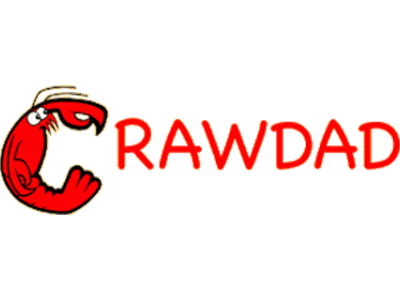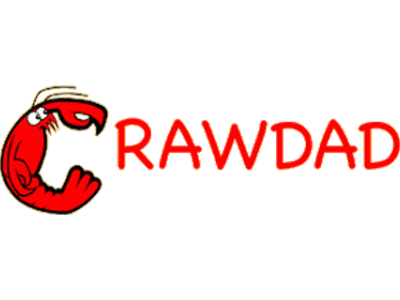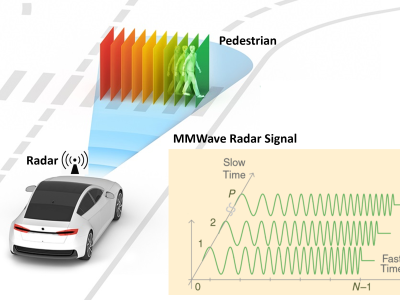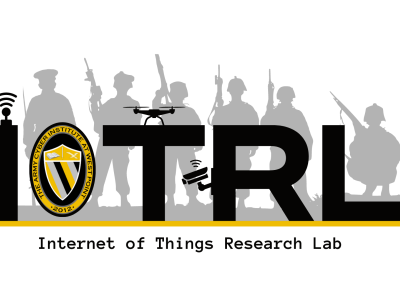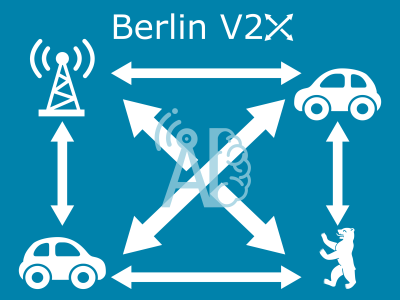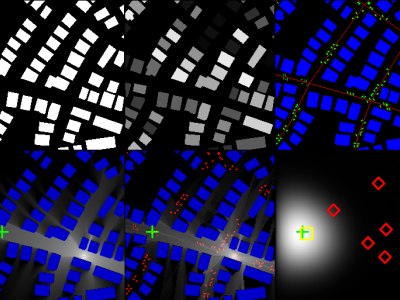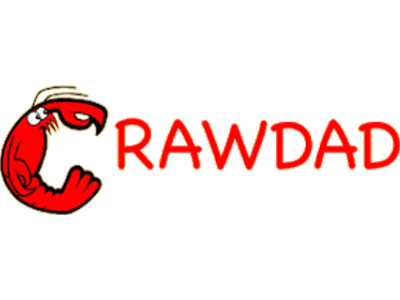CRAWDAD uoi/haggle

- Citation Author(s):
-
Dimitrios-Georgios Akestoridis (University of Ioannina, Greece)
- Submitted by:
- CRAWDAD Team
- Last updated:
- DOI:
- 10.15783/C7Z884
- Data Format:
 292 views
292 views
- Categories:
- Keywords:
Abstract
This dataset contains seven connectivity traces that have been derived from the cambridge/haggle/imote traceset (v. 2009-05-29). These connectivity traces can be used for network simulations with the Opportunistic Network Environment (ONE) simulator, since they are in accordance with the syntax of the StandardEventsReader format. The Python scripts that generated these connectivity traces are also provided.
last modified : 2016-08-28
nickname : haggle
institution : University of Ioannina
release date : 2016-08-28
date/time of measurement start : 2005-01-06
date/time of measurement end : 2006-04-27
collection environment : See cambridge/haggle (v. 2009-05-29)
network configuration : See cambridge/haggle (v. 2009-05-29)
data collection methodology : See cambridge/haggle (v. 2009-05-29)
sanitization : See cambridge/haggle (v. 2009-05-29)
Traceset
uoi/haggle/one
Connectivity traces for the ONE simulator that have been derived from the cambridge/haggle/imote traceset (v. 2009-05-29).
- files: haggle-one-intel.zip, haggle-one-computer-lab.zip, haggle-one-infocom2005.zip, haggle-one-cambridge-city-complete.zip, haggle-one-cambridge-city-students.zip, haggle-one-infocom2006-complete.zip, haggle-one-infocom2006-short-range.zip
- description: Seven connectivity traces were generated from the Bluetooth encounters of the cambridge/haggle dataset (v. 2009-05-29). The scripts that generated these connectivity traces were written in Python and are also available to download along with the respective trace. These Python scripts differ only slightly from each other, since most of the original trace files have a similar format.
- measurement purpose: Content Distribution Evaluation, Network Performance Analysis, Network Simulation, Opportunistic Connectivity, Routing Protocol for DTNs (Disruption Tolerant Networks), Social Network Analysis, User Mobility Characterization
- methodology: See cambridge/haggle/imote (v. 2009-05-29)
- sanitization: See cambridge/haggle/imote (v. 2009-05-29)
uoi/haggle/one Traces
- intel: Bluetooth encounters between 9 mobile and stationary nodes from the cambridge/haggle/imote/intel trace (v. 2009‑05‑29) have been converted into the StandardEventsReader format for use in the ONE simulator.
- short description
- Bluetooth encounters between 9 mobile and stationary nodes from the cambridge/haggle/imote/intel trace (v. 2009‑05‑29) have been converted into the StandardEventsReader format for use in the ONE simulator.
- description
- The Python script "generate_haggle_one_intel.py" was written to convert the Bluetooth encounters from the cambridge/haggle/imote/intel trace (v. 2009‑05‑29) into the StandardEventsReader format. This script requires as input the path to the "imote-trace1.tar.gz" file, which is part of the cambridge/haggle dataset (v. 2009‑05‑29), in order to generate a connectivity trace that can be processed by the ONE simulator.
- The first step for the derivation of the connectivity trace was to compute the starting time, i.e. the timestamp of the earliest valid encounter, which was equal to 121. Only encounters between the 8 mobile participants and 1 stationary device were used to generate the connectivity trace. As a result, 1402 of their entries were not processed, because external nodes were encountered in these entries. A list of valid IDs was created in order to rename the nodes in the derived trace by enumerating them from zero. In addition, a mapping from new to old node IDs was written to the "new-to-old-ids.tsv" file. The simulation time of each connection-up and connection-down event was then calculated, which corresponds to its original timestamp minus the starting time. The connection events were then sorted according to their simulation time. Finally, the sorted list of connection events was used to create the "haggle-one-intel.tsv" file, which can be used as input to the ONE simulator.
- The main characteristics of the connectivity trace can be summarized as follows.
- Number of Nodes: 9
- Number of Contacts: 1364
- Duration: 359190 seconds, or about 4.16 days
- configuration: See cambridge/haggle/imote/intel (v. 2009-05-29)
- format:
The "haggle-one-intel.tsv" file stores tab-separated values of connection events, in accordance with the syntax of the StandardEventsReader format, which can be used for network simulations with the ONE simulator.
Each line of this file describes a connection event and has the following five fields:
[time] [action] [first_node] [second_node] [type]
The first field corresponds to the simulation time at which the event occurred.
The second field is always equal to "CONN" since all the events in the connectivity trace are either connection-up or connection-down events.
The values of the third and fourth fields correspond to the IDs of two nodes.
The fifth field is either "up" when two nodes connect with each other or "down" when two nodes disconnect with each other.
- computer-lab: Bluetooth encounters between 12 mobile nodes from the cambridge/haggle/imote/cambridge trace (v. 2009‑05‑29) have been converted into the StandardEventsReader format for use in the ONE simulator.
- description
- The Python script "generate_haggle_one_computer_lab.py" was written to convert the Bluetooth encounters from the cambridge/haggle/imote/cambridge trace (v. 2009‑05‑29) into the StandardEventsReader format. This script requires as input the path to the "imote-trace2.tar.gz" file, which is part of the cambridge/haggle dataset (v. 2009‑05‑29), in order to generate a connectivity trace that can be processed by the ONE simulator.
- The first step for the derivation of the connectivity trace was to compute the starting time, i.e. the timestamp of the earliest valid encounter, which was equal to 236. Only encounters between the 12 graduate students were used to generate the connectivity trace. As a result, 2503 of their entries were not processed, because external nodes were encountered in these entries. There was also one more entry that was discarded, where the encountered node had the same ID with the scanning node. More specifically, in the original trace, the node with ID 12 encountered the node with ID also 12 when the time was equal to 15061. A list of valid IDs was created in order to rename the nodes in the derived trace by enumerating them from zero. In addition, a mapping from new to old node IDs was written to the "new-to-old-ids.tsv" file. The simulation time of each connection-up and connection-down event was then calculated, which corresponds to its original timestamp minus the starting time. The connection events were then sorted according to their simulation time. Finally, the sorted list of connection events was used to create the "haggle-one-computer-lab.tsv" file, which can be used as input to the ONE simulator.
- The main characteristics of the connectivity trace can be summarized as follows.
- Number of Nodes: 12
- Number of Contacts: 4228
- Duration: 455609 seconds, or about 5.27 days
- configuration: See cambridge/haggle/imote/cambridge (v. 2009-05-29)
- format:
The "haggle-one-computer-lab.tsv" file stores tab-separated values of connection events, in accordance with the syntax of the StandardEventsReader format, which can be used for network simulations with the ONE simulator.
Each line of this file describes a connection event and has the following five fields:
[time] [action] [first_node] [second_node] [type]
The first field corresponds to the simulation time at which the event occurred.
The second field is always equal to "CONN" since all the events in the connectivity trace are either connection-up or connection-down events.
The values of the third and fourth fields correspond to the IDs of two nodes.
The fifth field is either "up" when two nodes connect with each other or "down" when two nodes disconnect with each other.
- infocom2005: Bluetooth encounters between 41 mobile nodes from the cambridge/haggle/imote/infocom trace (v. 2009‑05‑29) have been converted into the StandardEventsReader format for use in the ONE simulator.
- description
- The Python script "generate_haggle_one_infocom2005.py" was written to convert the Bluetooth encounters from the cambridge/haggle/imote/infocom trace (v. 2009‑05‑29) into the StandardEventsReader format. This script requires as input the path to the "imote-trace3.tar.gz" file, which is part of the cambridge/haggle dataset (v. 2009‑05‑29), in order to generate a connectivity trace that can be processed by the ONE simulator.
- The first step for the derivation of the connectivity trace was to compute the starting time, i.e. the timestamp of the earliest valid encounter, which was equal to 20733. Only encounters between the 41 mobile participants were used to generate the connectivity trace. As a result, 5757 of their entries were not processed, because external nodes were encountered in these entries. A list of valid IDs was created in order to rename the nodes in the derived trace by enumerating them from zero. In addition, a mapping from new to old node IDs was written to the "new-to-old-ids.tsv" file. The simulation time of each connection-up and connection-down event was then calculated, which corresponds to its original timestamp minus the starting time. The connection events were then sorted according to their simulation time. Finally, the sorted list of connection events was used to create the "haggle-one-infocom2005.tsv" file, which can be used as input to the ONE simulator.
- The main characteristics of the connectivity trace can be summarized as follows.
- Number of Nodes: 41
- Number of Contacts: 22459
- Duration: 254150 seconds, or about 2.94 days
- configuration: See cambridge/haggle/imote/infocom (v. 2009-05-29)
- format:
The "haggle-one-infocom2005.tsv" file stores tab-separated values of connection events, in accordance with the syntax of the StandardEventsReader format, which can be used for network simulations with the ONE simulator.
Each line of this file describes a connection event and has the following five fields:
[time] [action] [first_node] [second_node] [type]
The first field corresponds to the simulation time at which the event occurred.
The second field is always equal to "CONN" since all the events in the connectivity trace are either connection-up or connection-down events.
The values of the third and fourth fields correspond to the IDs of two nodes.
The fifth field is either "up" when two nodes connect with each other or "down" when two nodes disconnect with each other.
- cambridge-city-complete: Bluetooth encounters between 52 mobile and stationary nodes from the cambridge/haggle/imote/content trace (v. 2009‑05‑29) have been converted into the StandardEventsReader format for use in the ONE simulator.
- description
- The Python script "generate_haggle_one_cambridge_city_complete.py" was written to convert the Bluetooth encounters from the cambridge/haggle/imote/content trace (v. 2009‑05‑29) into the StandardEventsReader format. This script requires as input the path to the "imote-traces-cambridge.tar.gz" file, which is part of the cambridge/haggle dataset (v. 2009‑05‑29), in order to generate a connectivity trace that can be processed by the ONE simulator.
- The first step for the derivation of the connectivity trace was to compute the starting time, i.e. the timestamp of the earliest valid encounter, which was equal to 1130493332 (Fri, 28 Oct 2005 09:55:32 GMT). Only encounters between the 36 Cambridge students and the 18 stationary devices were used to generate the connectivity trace. As a result, 30714 of their entries were not processed, because external nodes were encountered in these entries. A list of valid IDs was created in order to rename the nodes in the derived trace by enumerating them from zero. The total number of nodes was reduced to 52, because the stationary devices with IDs 40 and 41 in the original trace encountered only external devices. In addition, a mapping from new to old node IDs was written to the "new-to-old-ids.tsv" file. The simulation time of each connection-up and connection-down event was then calculated, which corresponds to its original timestamp minus the starting time. The connection events were then sorted according to their simulation time. Finally, the sorted list of connection events was used to create the "haggle-one-cambridge-city-complete.tsv" file, which can be used as input to the ONE simulator.
- The main characteristics of the connectivity trace can be summarized as follows.
- Number of Nodes: 52
- Number of Contacts: 10873
- Duration: 987529 seconds, or about 11.43 days
- configuration: See cambridge/haggle/imote/content (v. 2009-05-29)
- format:
The "haggle-one-cambridge-city-complete.tsv" file stores tab-separated values of connection events, in accordance with the syntax of the StandardEventsReader format, which can be used for network simulations with the ONE simulator.
Each line of this file describes a connection event and has the following five fields:
[time] [action] [first_node] [second_node] [type]
The first field corresponds to the simulation time at which the event occurred.
The second field is always equal to "CONN" since all the events in the connectivity trace are either connection-up or connection-down events.
The values of the third and fourth fields correspond to the IDs of two nodes.
The fifth field is either "up" when two nodes connect with each other or "down" when two nodes disconnect with each other.
- cambridge-city-students: Bluetooth encounters between 36 mobile nodes from the cambridge/haggle/imote/content trace (v. 2009‑05‑29) have been converted into the StandardEventsReader format for use in the ONE simulator.
- description
- The Python script "generate_haggle_one_cambridge_city_students.py" was written to convert the Bluetooth encounters from the cambridge/haggle/imote/content trace (v. 2009‑05‑29) into the StandardEventsReader format. This script requires as input the path to the "imote-traces-cambridge.tar.gz" file, which is part of the cambridge/haggle dataset (v. 2009‑05‑29), in order to generate a connectivity trace that can be processed by the ONE simulator.
- The first step for the derivation of the connectivity trace was to compute the starting time, i.e. the timestamp of the earliest valid encounter, which was equal to 1130493332 (Fri, 28 Oct 2005 09:55:32 GMT). Only encounters between the 36 Cambridge students were used to generate the connectivity trace. As a result, 10562 of their entries were not processed, because external nodes were encountered in these entries. A list of valid IDs was created in order to rename the nodes in the derived trace by enumerating them from zero. In addition, a mapping from new to old node IDs was written to the "new-to-old-ids.tsv" file. The simulation time of each connection-up and connection-down event was then calculated, which corresponds to its original timestamp minus the starting time. The connection events were then sorted according to their simulation time. Finally, the sorted list of connection events was used to create the "haggle-one-cambridge-city-students.tsv" file, which can be used as input to the ONE simulator.
- The main characteristics of the connectivity trace can be summarized as follows.
- Number of Nodes: 36
- Number of Contacts: 10641
- Duration: 987529 seconds, or about 11.43 days
- configuration: See cambridge/haggle/imote/content (v. 2009-05-29)
- format:
- The "haggle-one-cambridge-city-students.tsv" file stores tab-separated values of connection events, in accordance with the syntax of the StandardEventsReader format, which can be used for network simulations with the ONE simulator.
- Each line of this file describes a connection event and has the following five fields:
- [time] [action] [first_node] [second_node] [type]
- The first field corresponds to the simulation time at which the event occurred.
- The second field is always equal to "CONN" since all the events in the connectivity trace are either connection-up or connection-down events.
- The values of the third and fourth fields correspond to the IDs of two nodes.
- The fifth field is either "up" when two nodes connect with each other or "down" when two nodes disconnect with each other.
- infocom2006-complete: Bluetooth encounters between 98 short range and long range nodes from the cambridge/haggle/imote/infocom2006 trace (v. 2009‑05‑29) have been converted into the StandardEventsReader format for use in the ONE simulator.
- configuration: See cambridge/haggle/imote/infocom2006 (v. 2009-05-29)
- format:
The "haggle-one-infocom2006-complete.tsv" file stores tab-separated values of connection events, in accordance with the syntax of the StandardEventsReader format, which can be used for network simulations with the ONE simulator.
Each line of this file describes a connection event and has the following five fields:
[time] [action] [first_node] [second_node] [type]
The first field corresponds to the simulation time at which the event occurred.
The second field is always equal to "CONN" since all the events in the connectivity trace are either connection-up or connection-down events.
The values of the third and fourth fields correspond to the IDs of two nodes.
The fifth field is either "up" when two nodes connect with each other or "down" when two nodes disconnect with each other.
- infocom2006-short-range: Bluetooth encounters between 78 short range nodes from the cambridge/haggle/imote/infocom2006 trace (v. 2009‑05‑29) have been converted into the StandardEventsReader format for use in the ONE simulator.
- configuration: See cambridge/haggle/imote/infocom2006 (v. 2009-05-29)
- format:
The "haggle-one-infocom2006-short-range.tsv" file stores tab-separated values of connection events, in accordance with the syntax of the StandardEventsReader format, which can be used for network simulations with the ONE simulator.
Each line of this file describes a connection event and has the following five fields:
[time] [action] [first_node] [second_node] [type]
The first field corresponds to the simulation time at which the event occurred.
The second field is always equal to "CONN" since all the events in the connectivity trace are either connection-up or connection-down events.
The values of the third and fourth fields correspond to the IDs of two nodes.
The fifth field is either "up" when two nodes connect with each other or "down" when two nodes disconnect with each other.
Instructions:
The files in this directory are a CRAWDAD dataset hosted by IEEE DataPort.
About CRAWDAD: the Community Resource for Archiving Wireless Data At Dartmouth is a data resource for the research community interested in wireless networks and mobile computing.
CRAWDAD was founded at Dartmouth College in 2004, led by Tristan Henderson, David Kotz, and Chris McDonald. CRAWDAD datasets are hosted by IEEE DataPort as of November 2022.
Note: Please use the Data in an ethical and responsible way with the aim of doing no harm to any person or entity for the benefit of society at large. Please respect the privacy of any human subjects whose wireless-network activity is captured by the Data and comply with all applicable laws, including without limitation such applicable laws pertaining to the protection of personal information, security of data, and data breaches. Please do not apply, adapt or develop algorithms for the extraction of the true identity of users and other information of a personal nature, which might constitute personally identifiable information or protected health information under any such applicable laws. Do not publish or otherwise disclose to any other person or entity any information that constitutes personally identifiable information or protected health information under any such applicable laws derived from the Data through manual or automated techniques.
Please acknowledge the source of the Data in any publications or presentations reporting use of this Data.
Citation:
Dimitrios-Georgios Akestoridis, uoi/haggle, https://doi.org/10.15783/C7Z884 , Date: 20160828
Dataset Files
- haggle-one-cambridge-city-complete.zip (Size: 81.21 KB)
- haggle-one-cambridge-city-students.zip (Size: 79.02 KB)
- haggle-one-computer-lab.zip (Size: 34.49 KB)
- haggle-one-infocom2005.zip (Size: 158.05 KB)
- haggle-one-infocom2006-complete.zip (Size: 1.07 MB)
- haggle-one-infocom2006-short-range.zip (Size: 808.75 KB)
- haggle-one-intel.zip (Size: 15.14 KB)


